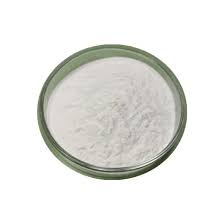
- +86-13363869198
- weimiaohb@126.com

Oct . 11, 2024 17:48 Back to list
phenacitin powder cas 62-44-2 factory
Overview of Phenacetin Powder (CAS 62-44-2) and Its Industrial Production
Phenacetin, a compound denoted by the CAS number 62-44-2, is a member of the class of analgesics and antipyretics. Historically, it was widely used for its pain-relieving and fever-reducing properties. However, due to safety concerns and the availability of more effective alternatives, its use in medical formulations has significantly decreased over the years. Nevertheless, understanding the production and application of phenacetin powder remains relevant, particularly for industrial manufacturers.
Chemical Structure and Properties
Phenacetin is chemically known as N-(4-ethoxyphenyl)acetamide. Its molecular formula is C10H13NO2, and it has a molecular weight of 179.22 g/mol. The compound is a white crystalline powder that is typically insoluble in water but soluble in organic solvents like ethanol and acetone. Its structural configuration features an acetamide group attached to an ethoxy-substituted phenyl ring, which contributes to its pharmacological properties.
Production Process
The industrial production of phenacetin typically involves the acetylation of p-ethoxyaniline
. The process begins with the reaction of p-ethoxyaniline with acetic anhydride or acetic acid in the presence of a catalyst. This reaction facilitates the substitution of the amine hydrogen with an acetyl group, yielding phenacetin.Manufacturers often ensure high purity levels by employing state-of-the-art techniques during various stages of the synthesis process, including purification and crystallization. Regular quality control measures are put in place, adhering to strict regulatory standards to guarantee that the final product meets the required specifications for various applications.
Applications of Phenacetin Powder
phenacitin powder cas 62-44-2 factory

While the medicinal use of phenacetin has declined, the compound still finds applications in various areas. In analytical chemistry, phenacetin is often utilized as a reference standard or internal standard in the analysis of other compounds. It serves as a model substance for studying drug metabolism and pharmacokinetics.
Moreover, phenacetin is used in some industrial processes, including the manufacture of other pharmaceuticals and as an intermediate in chemical syntheses. Some industries also employ it in the production of dyes and flavors, where its chemical properties can benefit specific formulations.
Safety and Regulatory Considerations
The decline in the use of phenacetin in pharmaceuticals is largely attributed to safety concerns. Studies have linked prolonged use to adverse effects, such as nephropathy and potential carcinogenic risks. Consequently, regulatory bodies around the world have placed restrictions on its use in medicinal products. Manufacturers dealing with phenacetin powder must navigate these regulations carefully, ensuring compliance to mitigate health risks associated with chemical exposure.
Occupational safety is also paramount during the handling of phenacetin in industrial settings. Workers must be equipped with personal protective equipment (PPE) and trained in proper handling techniques to minimize exposure. Additionally, manufacturers have the responsibility to implement robust safety protocols to prevent spills and accidents within the production facilities.
Future Outlook
The future of phenacetin powder production may be influenced by ongoing research into safer and more effective alternatives for pain relief. Innovations in pharmaceutical chemistry may lead to the development of novel compounds that can replace phenacetin in various applications. Nevertheless, the industrial sector may continue to find niche uses for phenacetin given its unique chemical properties.
In conclusion, phenacetin powder (CAS 62-44-2) represents a compound with a rich history and a complex profile in terms of production and application. While its prominence in medical formulations has waned, its role in industrial applications and analytical chemistry illustrates its lingering significance in the chemical landscape. As regulatory scrutiny intensifies and the focus shifts towards safer alternatives, the future of phenacetin will depend on adapting to these challenges while exploring new opportunities in various scientific fields.
-
GHRP-2 (158861 67 7) Peptides for Fat & Muscle Gain
NewsAug.06,2025
-
GS-441524 for White Liquid Factories: Boost Efficiency & Purity
NewsAug.04,2025
-
Premium Pharma Intermediates | AI-Optimized Synthesis
NewsAug.03,2025
-
GS-441524 White Liquid Production for Factories | AI-Optimized
NewsAug.02,2025
-
AI-Optimized CAS: 79099-07-3 Factories for High Yield
NewsAug.01,2025
-
Pharmaceutical Intermediates - AI-Optimized Synthesis & Purity
NewsJul.31,2025